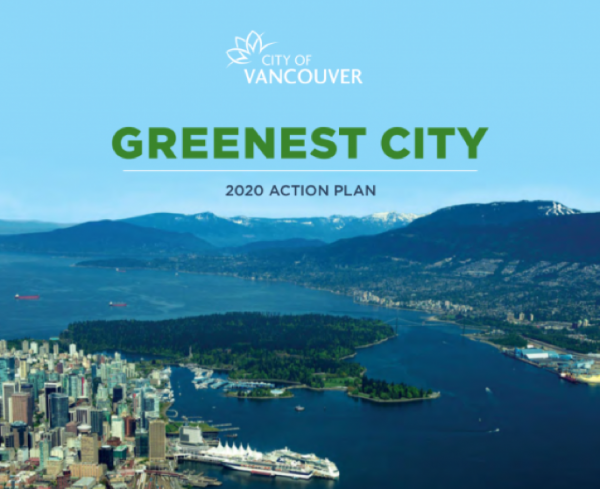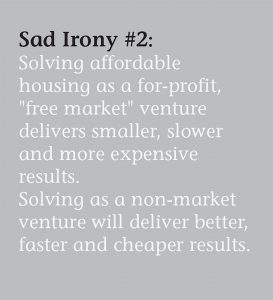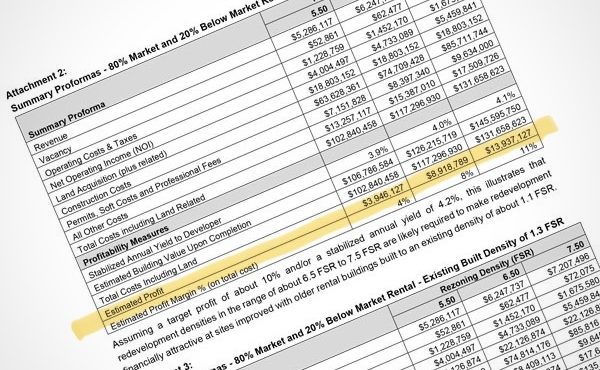
The Aftermath – “Green Profits”
Redevelopment on large post-Expo 86 sites (North Shore of False Creek and Coal Harbor), the let go industrial areas (Arbutus Industrial Lands and Collingwood), Yaletown/Downtown South, and transit-oriented development policies for emerging neighborhoods near Expo Line Skytrain Stations, had been launched. Other large industrial areas, such as the False Creek Flats, were considered sacrosanct for job space and not pursued for mixed residential use consideration.
Where to turn for available land?
Given the political pressure exerted by the hardwired development industry to open up new lands outside the metro core, our “discretionary elegance”—our policy-making, disciplined development review, and insightful placemaking implementation—was co-opted in favor of political self-promotion disguised as new “best practice”.
First, there was EcoDensity. Then Greenest City, essentially the same program, just different political branding. This was the start of land costs being “dialed up” to 11 and 12 (Spinal Tap reference), enabled through the perceived speculative potential of these programs.
Vancouver was for sale, and these political branding exercises suspended rigorous, thoughtful neighbourhood planning programs that were effectively controlling land costs. Neighbourhood urban design frameworks that declared development certainty, were cast aside in favor of rationalizing the prospect of higher density as an “environmental” response towards a more “compact city”. Yet, there was little interest in an integrated, ecologically driven, City-Wide Plan.
The dismissal of CityPlan, politically intentional, invited lucrative spot re-zonings. Seasoned and disciplined methods—and most importantly, trust—gave way to centralized power as evidenced by the shift to a politized city manager’s office. Other senior bureaucrats were added to reinforce a heavy-handed approach to clearing the way for unfettered development approvals: Brenhill’s 8X on the Park and early versions of “as many towers as possible” Grandview Woodlands Plan (I refer to this work as the “22 Gun Salute” to the GW Community), among others.
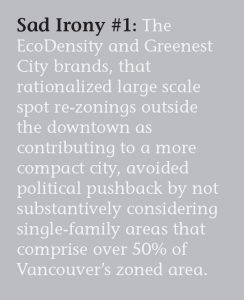 To be fair, some good came from this process, including climate action, laneway housing, more rigorous development, and building performance standards, and improved practices for Engineering and Parks such as bike lanes. This, however, made it all the more difficult to see the rapid decline in the Planning Department’s ability to serve and protect. The exodus of knowledge, experience, and most importantly, wisdom, from attrition and early retirement, accelerated the cultural shift with only a few left who remembered how to implement and advance best practices (these former colleagues who remain at the hall are my heroes).
To be fair, some good came from this process, including climate action, laneway housing, more rigorous development, and building performance standards, and improved practices for Engineering and Parks such as bike lanes. This, however, made it all the more difficult to see the rapid decline in the Planning Department’s ability to serve and protect. The exodus of knowledge, experience, and most importantly, wisdom, from attrition and early retirement, accelerated the cultural shift with only a few left who remembered how to implement and advance best practices (these former colleagues who remain at the hall are my heroes).
Bottom-up became top-down.
Flexible working hours, that supported work-life balance while reducing the environmental impacts of commuting—remnants of The Before Times— were cruelly eliminated without notice. There was a glaring absence of staff training that could ensure regulatory consistency from a shared understanding of what was important to scrutinize, and what was not. Moreover, and perhaps intentionally, there was no succession planning that ensured promotion from within.
Sadly, we lost many committed, talented, mid-career urban planners and designers at this time. There were many days when I felt senior managers were intentionally forcing seasoned public servants to resign or take early retirement thereby reducing municipal pension obligations. If this was their intent, shame on them!
Staff, understandably, put their heads down. Challenging such heavy-handed politics with fresh ideas became the exception. Those with imminent pensions became understandably risk-averse, choosing not to challenge or lead. Council briefings were suspended. The Planning Department was intentionally weakened, losing the political support and necessary capacity to continue serving, protecting, and leading on behalf of all stakeholders in the city-making process.
With a weakened Planning Department, and leadership too timid to push back, the city relied more on the hardwired development industry for “ideas”. City-making was the platform for rationalizing industry profit. City Hall’s values changed to aggressively facilitate industry self-interest. “Urban Design” became dirty words…viewed as “in the way” of industry-centric ambition, not as an inclusive process that creatively reconciled respective interests. The city’s General Manager would be quoted: “Urban Design, at its best, is a luxury. At its worst – a hindrance.”
What started as discretionary elegance became a destructive, market-facilitated monster leaving large swaths of unaffordability as it lumbered through Vancouver neighbourhoods.
We had lost our way.
And in the wake of such destruction, there were consequences. Land costs spiraled out of control.
Just Make the Land “One Louder”
The Market is not altruistic, nor philanthropic. It lacks generosity of spirit, a conscience, a soul.
It takes what it can. The taking has now become excessive with huge affordability impacts to the purchaser or renter. The prevailing for-profit system is underpinned by complicit civic policies that mandate land assembly. These policies continue to unnecessarily produce deeply excavated concrete storage vaults for fossil fuel-eating machines. And the escalating speculative costs of assembling land, with everyone wanting to selfishly exploit their own unearned land equity, are a direct by-product of invitational re-zoning policies.
Vancouver’s reliance on development revenue to balance its “business model”, combined with an unpredictable and complex approval system, has produced a spin-off industry—“development management services”. Those who promote these services (who do not design, build or take any direct risks) add directly to a project’s soft cost bottom line. A more efficient approach to development approvals under zoning would not require these costs to be borne directly by the end purchaser/renter.
By-law mandated underground parking requirements (a friendly reminder that renters or purchasers must pay an additional $70,000.00 for a stall whether they use it or not) produce above-ground buildings that are inefficient with internal corridors that purchasers and renters must buy and then maintain including stairs and elevators.
Speculators, as a result, want larger sites to offset such floor area and parking layout inefficiencies so they assemble land. Renters and purchasers are then required to also pay for the land so that the speculators can get more for their money or that of their investors. I call this “re-zoning madness”.
These less efficient, expensive buildings are also insular. They weaken community resilience. We have a problem, and everyone at the hall knows this: alternative, more efficient ground-oriented buildings, that productively generate social exchange and shared capital necessary for resilience, are not available “off the shelf” under Vancouver’s current Zoning By-law.
Unit sizes are also trending smaller and smaller. By blindly accepting the prevailing for-profit development system, we are collectively complicit in producing inferior, smaller, slower, and more expensive housing.
We can do better, much better, by re-thinking existing zoning.
Industry boosters, including professional organizations who lobby and financially support election campaigns, are all complicit in driving up housing costs. And they don’t care. Make no mistake, the industry will continue to fight hard to keep the current system in place. They might publicly lend soft support for more innovative “Missing Middle” housing policies but will lobby against them in private conversations. They simply don’t want to give up market share.
It is hard to know just how deep such self-serving influence exists at the municipal level today. The provincial debacle of the Little Mountain land sale—including an interest-free loan!—is an example of how the industry can be politically rewarded for a failure to launch, let alone deliver. I think this example is symbolically relevant to what we collectively face today—a singular reliance on a for-profit system to deliver affordable housing.
The words “for-profit” and “affordable” do not play well together.
Programs such as the City of Vancouver’s Short Term Incentives for Rental (STIR) program—or as some say, Spot Re-zonings to Infuriate Residents—turned land costs up to 13! The Rental 100 program to 14. And more recently, the Moderate Income Rental Housing Pilot Program (MIRHPP) and MIRHPP 2.0, up to 15 and 16!
Related, and suspicious, planners heavily rely on Transit-Oriented Development (TOD) as a “best practice” to justify policies that mandate land assembly towards larger developments anywhere near transit. TOD has come to mean “Towers Only Development”. Towers are expensive forcing purchasers and renters to cover project costs, such as unnecessary underground parking stalls, by paying an unhealthy % of their income. Those left behind pay through the nose in the name of “planning practice”.
In contrast, Transit-Oriented Housing (TOH) can be substantively delivered in lower, dense, forms that take advantage of 6-storey wood frame height limits, or taller mass timber buildings once this market matures. Well-conceived zoning schedules can strategically facilitate this market to advance more quickly, with companion design guidelines supporting simple, rectilinear building forms that enjoy the efficiency and economy of wood structures with repetitive dimensioning.
The pending redevelopment of our arterials—especially the Broadway Corridor—is a large-scale, immediate opportunity to facilitate this market towards truly more environmentally responsible growth. The Broadway Corridor, enabled by thoughtful Urban Design policy, has the potential of a multiple word score win that will strengthen civic resiliency: the big idea of which should be “A Mass Timber Showcase” that also delivers substantial housing with a large % as secured non-market tenure.

The consequences of “re-zoning to affordability” are that young people are left behind to pay for the city’s expanding de facto property tax grab in the form of Community Amenity Contributions (CAC’s) which are intended to generate funds to serve existing and new residents. When considering re-zoning approvals, elected officials continue to vote, if not legally then optically, in a conflict of interest by giving away land value in exchange for CAC cash or amenity. This predictable development-oriented revenue takes the pressure off the public purse when property taxes are established. What many don’t know is that future municipal budget cycles pencil in this revenue well in advance of public hearings to approve re-zonings, biasing the decision-making process.
Perhaps instead of designating Council-approved re-zonings as CD-1 for Comprehensive Development, we should more accurately reflect their monetary contribution to the municipal budget by re-naming them PTSD— Property Tax Supportive Development—with young purchasers left to cope with the traumatic stress of how little they receive for their hard-earned money!
Bigger is not always better.
The current system is rigged against the small-scale owner-developer. It is hardwired against incrementally delivered affordable housing regulated under existing zoning. Alternatively, better, faster, and cheaper housing can be delivered if we compel a market of “smallness” to take root and prosper.
More socially responsible zoning, not re-zoning, is our route to this future.
So my question to our elected officials: Just how “loud” will you turn up land costs by continuing to support citywide “bigness” policies that compel large site assembly to serve a for-profit development industry as the only way to address affordability? Allow me to re-phrase using Spinal Tap referencing: “Will city hall continue to believe that industry promoted development economics, necessary to justify future affordable housing “viability”, can be rationalized by just making the land one louder”?
Staff come and go. Elected officials have relatively short political lives, yet their policy intentions remain institutionalized for decades. Guess who will pay for the land being “one louder”? It’s time to stop amping up land costs. Time to unplug. We need an acoustical set for those left behind.
Let’s get back to basics. We should start by honorably re-engaging with our neighborhoods as a first step to creating better zoning to meet all interests.
This perfect storm of heavy, top-down, politics combined with the hemorrhaging of knowledge, wisdom, and leadership necessary to operate a sophisticated discretionary development approval system invited market exploitation at the expense of the neighbourhoods, and ultimately affordability. And while staff’s efforts to address the complex, politically fraught challenge of delivering affordable/non-market housing is commendable (and again these folks are also my heroes), one can’t be faulted for remaining cynical as land escalation continues.
Market Wealth is the Child of Community Engagement
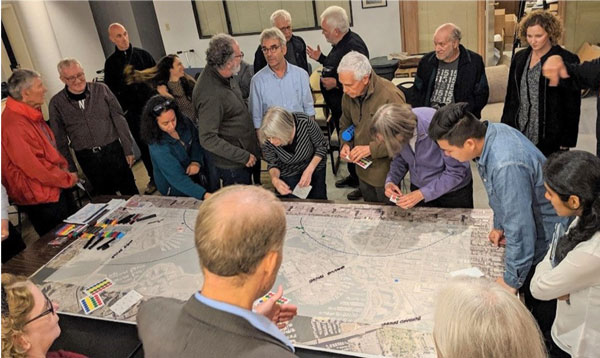
Our current discretionary approval system, which “liberates market value” under existing zoning, only works if it is underpinned by Council-approved policies that are borne from legitimate public processes with the community. This productive, and symbiotic, policy generation and implementation system requires administrative rigor to ensure that the greater good is always served first before additional economic (land) value is awarded. Notwithstanding the affordability challenges that have recently emerged, our system had worked well for decades (again, the envy of many other jurisdictions during The Before Times), with all discretionary approvals under existing zoning demonstrating how each “gave back” as mandated by Council-approved policies derived from meaningful public engagement.
We always described this form of regulatory discipline as “Finances Follows Form” meaning that urban design performance had to be settled first before the Community Amenity Contributions were calculated.
The community must always be represented at the approval table for a discretionary system to sustain. Thoughtfully managed development approvals, informed by local insight, ensure that bad projects struggle while good ones, that contribute beyond their own market self-interest, more easily advance.
The courage to say no, when necessary, reflects a Planning Department’s leadership, or not. Our approval system gave us the flexibility to stay out of the way when we needed to facilitate market innovation supported by our talented designers and thoughtful builders. Koos Corner by Bruce Haden—founder of Human Studio Architecture—and Robert Brown of Chesterman Properties/Catalyst Community Developments Society, broke every rule at the time it was created: requiring extraordinary intervention by the Director of Planning. This project, supported early in the process by adjacent neighbors, is now considered the “poster child” for how to intensify small corner lots throughout the city.
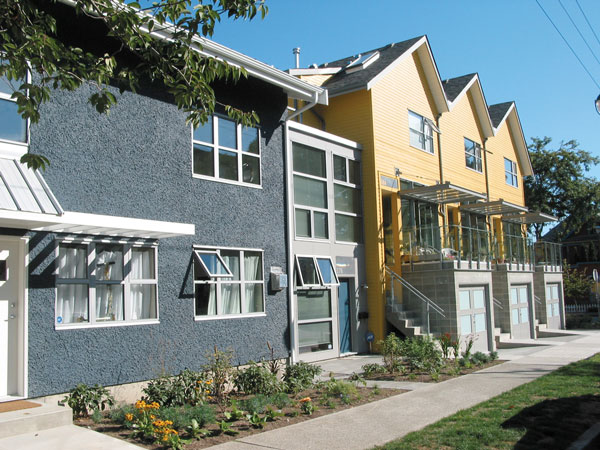
The inherent flexibility available through Director of Planning relaxations, or via staff support at the Board of Variance when aspects are not relaxable, still exists today. Staff needs additional training, supported by management leadership, in order to creatively engage with the market and wisely dispense discretionary value.
Institutionalized Profitability
During The Before Times, we were well aware of the development value we were creating by supporting and facilitating discretionary approvals under zoning, let alone via re-zoning. A stroke of the pen could easily double, even triple, land value. Our job was to ensure that all projects justified such land profit-taking as the hard costs of construction remained generally constant.
Unfortunately, our zoning by-laws became increasingly outdated no longer reflecting evolving societal needs. Now more than ever. Current regulations emphasize visual aspects of architectural expression/features, instead of delivering meaningful societal amenity in the form of more affordable housing. The “media” also promotes a culture of architectural infatuation, with the trickle-down effect infecting the current regulatory culture: one more focussed on superficial qualities justified as “design review”, versus societal contribution.
Economically, industry insiders have confessed that development proponents prepare multiple business cases (“pro formas” in industry lingo) when pursuing project approvals. One set of numbers is presented to the lending institution casting the project in its most profitable, risk-averse light. Another set of numbers for the same project is presented to the city’s Real Estate Services staff exaggerating the challenges of market viability. The city wants all projects to advance to occupancy, especially re-zonings which produce direct revenue (CACs), while also expanding the property tax base.
This brings to mind a memorable quote from the late architect Bing Thom – “Vancouver has historically sustained its economy from three things – real estate development, drugs, and prostitution.”
It is easy to imagine that the city doesn’t “negotiate hard”…choosing instead to leave value on the table, in addition to the 15-20% presumed (read “guaranteed”) profit that all condo development proposals are thought to deserve. Anything above and beyond such institutionalized return-on-investment, including disguised profitability in the way that project costs are presented (developers typically enjoy 100% return on their own equity!), comes at the expense of higher purchase prices and rents. I know developers, who were courted by the City to secure land and build new housing in areas of need, demand 40% profitability before they would consider developing!!!
It is also worth noting that the “legislated profitability” for condo projects noted above should be substantively lower (4-5%) for market rental projects given that investors in this market are typically more interested in much longer timelines for return on investment with rents contributing to portfolio asset development. For example, Insurance Companies would still invest if the city mandated this lower rate of return. Applying condo profitability to market rental approvals only makes rents higher.
Another hidden societal cost of easy profits, at the expense of the renters and purchasers left behind, can be traced to how project proformas are assessed at city hall to justify densities towards “viability”. For example, the recently unveiled 40 storey tower proposal on the northeast corner of Granville and Broadway has been owned by the developer (who I have respect for) for 14 years. The property was generating nominal rental income during that time period. Here are questions on behalf of future renters or purchasers – How is the substantive increase in land value, from the date of purchase until now, considered when rationalizing staff support for the project? Does the developer pocket all of the land escalation, at the expense of lower-cost housing, with city hall only considering its current land value? And how does this compounding “flight to bigness” impact property assessment and related land value, as well as purchase price and rent structures, nearby/elsewhere? The same questions were asked of the recent approval at 10th and Alma a year ago.
And related: why has the Broadway Corridor planning not advanced, given that the highly controversial Denny’s Broadway and Birch Street re-zoning (a celebration of concrete, not a mass timber showcase) that was marginally approved in a policy vacuum absent any Urban Design advice (read “big ideas”) from City Hall, was well over a year ago? The optic, intentional or not, is that the City wants Council to vote on the Granville/Broadway tower project to establish height precedent, as opposed to doing the hard work of urban design and economic analysis towards multiple citywide objectives.
If the Broadway and Granville proposal is approved, will it become precedent for the proposed 40 storey “Canada’s Earth Tower” at 1745 West 8th Avenue that, while innovative and commendable for its environmental contribution, does not appear to offer any demonstrable public benefit? I’m also curious if the same cast of development industry boosters who advised the previous Liberal government on Little Mountain, are continuing to advise the Province of BC, and/or the City of Vancouver on how best (most profitable) we should grow our city. I fear that some Housing Advocates are also hardwired into any backroom conversations. I hope they recognize when they are arguing for precedent-setting policies/proposals that worsen affordability.
We must assume that high profitability is always possible and that the city is complicit, through its industry-biased development policies and companion real estate analysis, in ensuring that developments easily proceed to market. I have no confidence that any improvement to protracted approval timelines that reduce the carrying cost of unimproved land, will translate into more honest development “pro-forma” submissions (read “admissions”) that should see project costs come down towards lower purchase prices and rents.
We should all be frustrated by the City’s inability to demand more of the market, especially towards non-market housing. Some will remember that the Olympic Village started as a politically mandated 1/3 equal mixed-housing tenure initiative (secured non-market/modest market rental/market) and was then revised in mid-design by the EcoDensity Council to only 20% non-market/80% market.
We worked proactively with Millennium Development to almost fully deliver on the original housing policy intention for mixed 1/3 tenure by discretely adding more density on the fly that was defensible towards strengthening the Urban Design intention for a mid-rise community. This is instructive towards how we might re-calibrate/increase existing zoning allowances towards securing non-market and other housing tenures in lower-density contexts.
More generally at that time, however, we did not address the challenges of land escalation exacerbated by the arrival of world capital. Perhaps we were too addicted to the market that sought safe financial haven as evidenced by escalating spot re-zonings, with the City happily complicit to fill up its coffers with Community Amenity Contributions (CACs).
Being slow to mitigate escalating land value, or choosing to not suppress at all, has meant that housing costs have extraordinarily outstripped the purchasing/renting power of those left behind, especially our service providers and others that make our city work. We are stealing their futures given the mortgages and rents they must pay for the rest of their lives. And it’ll only get worse unless we shift away from purely unfettered market-driven approaches that continue to dial-up land costs with easy profits being guaranteed to the already privileged, and paid for by those left behind.
Such a finely tuned system began to implode once power was centralized and top-down policies were imposed. The system became confused with a disproportionate number of lucrative, CAC generating, site-specific re-zonings, commanding more and more staff attention, and ultimately becoming the regulatory norm. Substantially overscaled buildings (8X on the Park), backroom conversations, inappropriate influence on the city’s internationally respected Urban Design Panel, and regression in meaningful public engagement, infected city hall culture.
Something worth noting is that staff recently proposed (Council did not support) a reduction in public engagement by making it harder for the community to speak directly to Council. I cannot help but wonder if a system, that emphasized prevailing zoning approvals over re-zoning, would necessitate such a reduction in public service. Is serving the market a good reason to compromise a transparent, democratic process that has worked well for decades?
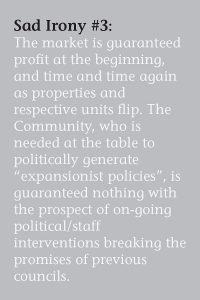 What continues to be lost in this conversation is that it is the neighborhoods that bare all of the risk for such industry-biased practices. There is no longer certainty that community-minded folks, who generously contribute hours and hours of personal time to support city-sponsored public engagement processes, won’t see their civic-minded efforts summarily dismissed by any future Council’s stroke of the pen.
What continues to be lost in this conversation is that it is the neighborhoods that bare all of the risk for such industry-biased practices. There is no longer certainty that community-minded folks, who generously contribute hours and hours of personal time to support city-sponsored public engagement processes, won’t see their civic-minded efforts summarily dismissed by any future Council’s stroke of the pen.
That is what is happening now with, while well-intentioned, one size fits all housing policies that dial-up land costs and building scale well beyond community plan commitments made by previous councils intended to offer certainty. This is being done citywide, with no substantive public engagement, at a time when the city promotes the prospect of a “City-Wide Plan”.
As with Broadway Corridor planning, are these initiatives intended to strategically placate, perhaps even distract, while more aggressive development policies continue to be approved and implemented? We are in danger of losing longstanding, productive, and meaningful community involvement towards policies that could tame land value.
A system that recognizes, and creatively facilitates, all interests towards shared solutions is the way forward. A deeper appreciation of how specific interests can support each other towards new, more affordable, housing ideas will be explored in detail in Part 3.
***
Related articles, in sequence:
- You Forgot About Me! – Part 1
- You Forgot About Me! – Part 2
- Zoning Must Evolve – Introduction
- Zoning Must Evolve – Part 1
- Zoning Must Evolve – Part 2
- Zoning Must Evolve – Part 3
- Zoning Must Evolve – Part 4
- Zoning Must Evolve – Part 5
- You Forgot About Me! – Part 3
**
Scot Hein is a retired architect, former senior urban designer at the City of Vancouver and the University of British Columbia. He is an adjunct professor of Urban Design at UBC, lecturer at Simon Fraser University and founding board member of the Urbanarium.

